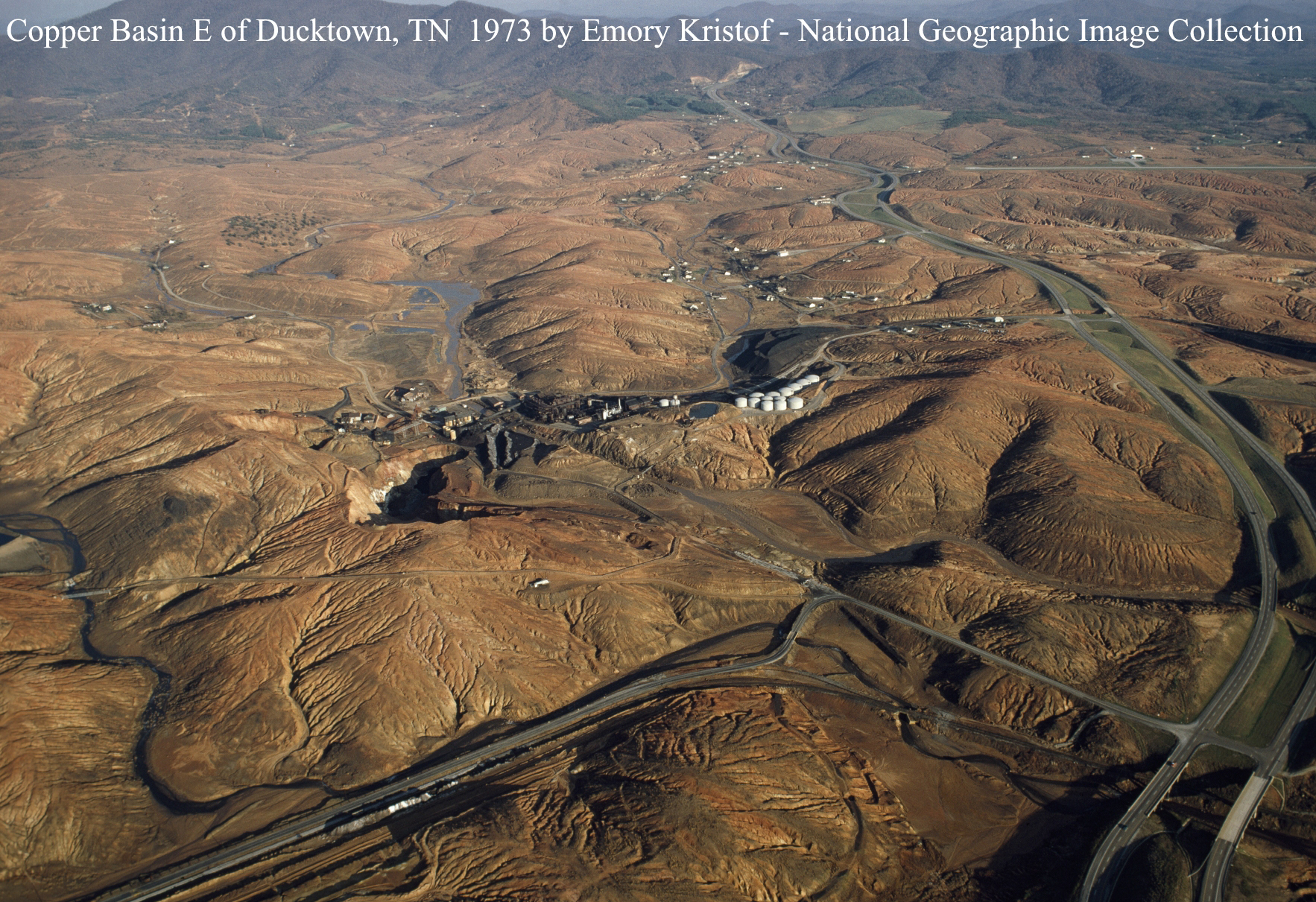Ducktown, Tenn., is attempting to become the greenest small town in America, and a project led by a University of Tennessee at Knoxville professor and former Chattanooga area resident is expected to help play a part.
Dr. Tim Ezzell, a political science lecturer and director of the school's Appalachian Teaching Project (ATP), and his students are working with the nearby Copper Basin Learning Center at Copper Basin High School to raise at least $2,500 through crowd funding to buy a 3D printer for the community.
The town of nearly 500 residents, in far eastern Polk County near the North Carolina border, already produces 60 percent of its power using solar sources, has four electric vehicle charging stations and LED stoplights.
"They're crafting a new future for themselves," Ezzell said. "Tourists today never imagined what [the area] used to look like."
Once a center for copper mining, it later produced iron and copper from high-sulfide ores. The open roasting of the ores released large amounts of sulfur dioxide, which killed much of the vegetation in a 50-square-mile area, making the entire Copper Basin look like a vast, gullied, red wasteland.
Today, the area is mostly re-vegetated, or re-greened, if you will, leading to a real, not symbolic, desire to be the greenest small town.
The idea for the 3D printer came about after students involved in Ezzell's Appalachian Teaching Project, which is sponsored by the state and federally funded Appalachian Regional Commission and created to provide planning and economic development assistance to distressed communities, visited the Copper Basin area last year to think about how emerging technologies "might impact small, rural communities."
Three-D printing, they felt, was new and "had a lot of potential" for small-scale advanced manufacturing, he said. "A lot of creative things could be done with it." But students, who might also use it in technology, math and arts education classes, needed "to have more awareness of it and familiarity with it."
The project's recommendation was that a printer be bought so students could work with it ahead of any higher education and work applications down the road.
This year's ATP students, in considering how to acquire a $2,000-plus printer to be placed in the Copper Basin Learning Center, an after-school and enrichment program at the high school, hit upon crowd funding. They also considered that doing so would test the viability of crowd sourcing in smaller communities.
As part of the project, the students are researching and writing a guide to such sourcing, intending that it will offer "lessons learned" and "best practices" and could be distributed to smaller towns, which could then run their own campaigns.
They will then present their findings before the Appalachian Regional Commission in Washington, D.C., in December.
"It's a really good experience, one of the more defining moments of their education -- real-world experience," Ezzell said of the project, now in its 15th year. "And standing in front of a federal agency is good for them."
He and the students set a funding goal of $2,500, which the Indiegogo crowd funding site shows would go to purchase the CBLC Cubify Cube from 3D Systems. Should they reach their stretch goal of $3,500, the site indicates they would buy the Makerbot Replicator2 from Makerbot.
The campaign runs through Saturday, more than $1,440 already has been secured and donations may be made at http://bit.ly/1sXgAkH.
"I think we're going to get there," Ezzell said. "This will allow [students] to have access to some of the same opportunities students have in Chattanooga."
And for Ducktown and the Copper Basin area, "I see this as part of helping them reach this [green] vision," he said. "People feel like a small town can't be that progressive. But this is part of dispelling that myth."

